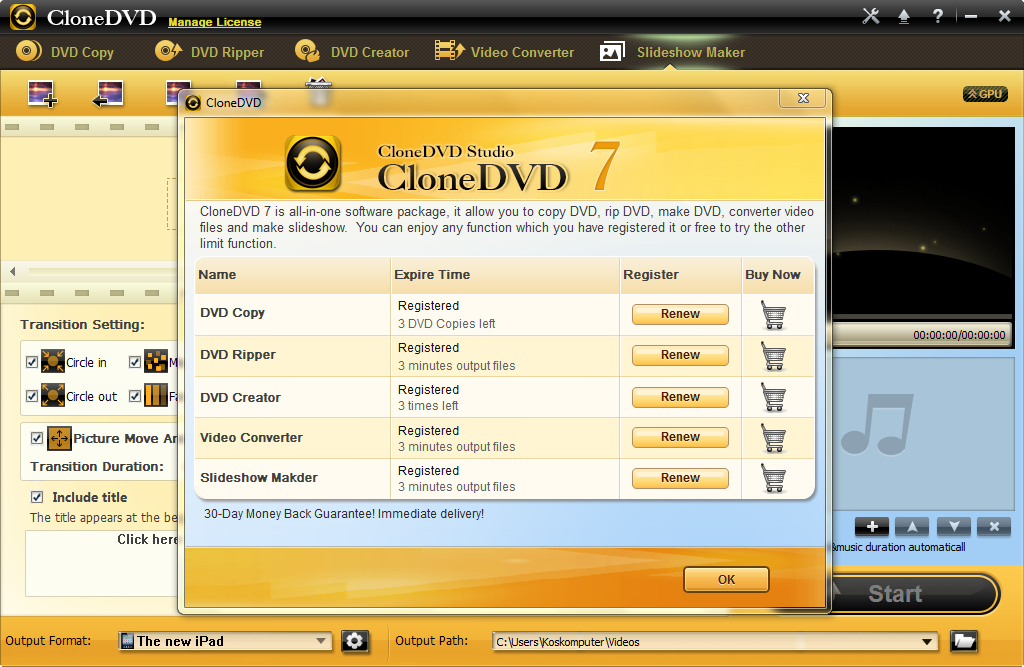

- Clone windows 7 dvd to iso install#
- Clone windows 7 dvd to iso archive#
- Clone windows 7 dvd to iso code#
Now, go into C:\Program Files\Windows AIK\Tools and find ImageX.exe and copy it where you put the Windows Image to Virtual Hard Disk Converter (WIM2VHD) script. (If you're not using 7-Zip, you're missing out on life, BTW)
Clone windows 7 dvd to iso archive#
I didn't want to burn the ISO to disk, so I used 7-Zip to open the ISO as an archive and extract it. This file is a large ISO (1.5G) so be aware. Then I downloaded and installed the Windows® Automated Installation Kit (AIK) for Windows® 7. I probably didn't need to copy it over, but it likely made the process faster. I copied my Windows 7 DVD to a folder on a drive with lots of space free. You can also automate the OOBE by supplying your own unattend.xml file, making the possibilities limitless.įresh squeezed, organically grown, free-range VHDs - just like Mom used to make - that work with Virtual PC, Virtual Server, Microsoft Hyper-V, and Windows 7's new Native VHD-Boot functionality! VHDs created by WIM2VHD will boot directly to the Out Of Box Experience, ready for your first-use customizations. The Windows(R) Image to Virtual Hard Disk (WIM2VHD) command-line tool allows you to create sysprepped VHD images from any Windows 7 installation source. It's the Windows Image to Virtual Hard Disk Converter (WIM2VHD).
Clone windows 7 dvd to iso code#
Well, there's a script over at the MSDN Code Gallery to help with this.
Clone windows 7 dvd to iso install#
The step where I install an OS onto my VHD takes too long, so I'd like a prepared VHD that's already to be started for the first time, kind of like when you buy a machine from Dell or whoever and you get that nice "starting your computer, detecting drivers" action on first boot. I'm always trying crazy new Daily Builds of big stuff that takes a while to be installed. However, this is STILL not convenient enough for me. If you want to install your OS (Windows Server 2008 and Win 7 Enterprise or Ultimate are the only ones supported) then you just install away. You can create a blank VHD, set it up in your boot menu with BCDEdit ( details and walkthrough here and a video demo here) and then just boot off your VHD. VHD as a disk format is built into the Operating System (although, strangely, you can't mount ISOs.). Making a VHD is easy with Windows 7 since you can create and mount/attach VHDs in the standard tools. Also is awesome on a laptop if you have the HD space. Your OS runs on the hardware directly, except your disk, which is virtualized and runs inside a single file. You get Undo support for your disks.Įverything is virtualized, so you're taking a perf hit on pretty much everything. Your OS's are completely separate from each other and can't hurt one other. Or you can have them all share the same disk, which is dangerous. You have to partition which means disks of fixed size. This isn't Virtual Machines, to be clear, and it's not Dual Booting. I'm loving the Windows 7 "Boot to VHD" lifestyle.


 0 kommentar(er)
0 kommentar(er)
